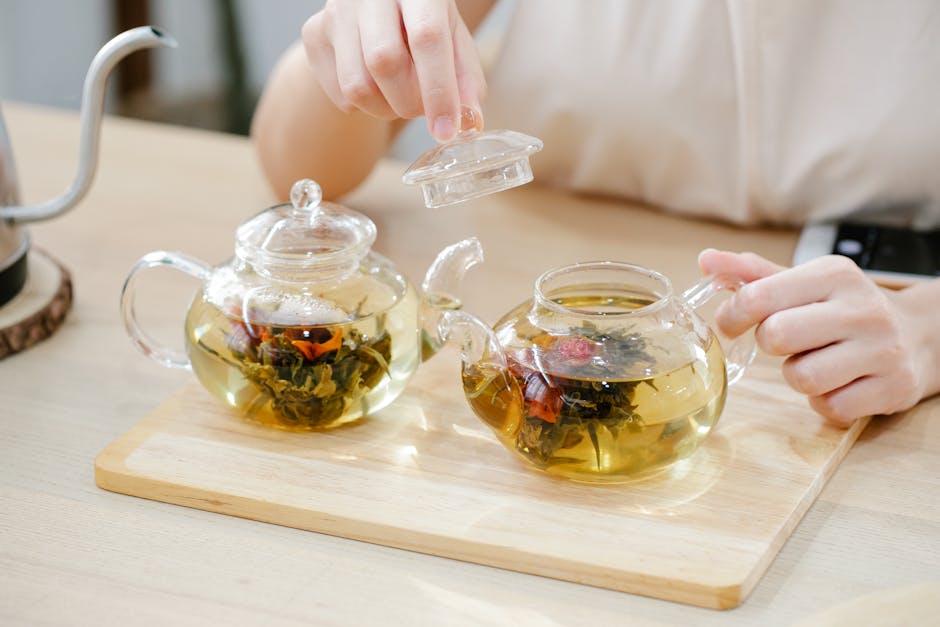Cultivating Calm: The Art and Practice of Slow Living in a Fast-Paced World
In an era where speed and efficiency are often equated with success, the concept of slow living offers a refreshing counterpoint. At Style QA, we believe that style is more than appearance—it’s about living with purpose and insight. This philosophy extends to how we approach our daily lives, relationships, and even the smallest of routines. In this comprehensive guide, we invite you to explore the art and practice of slow living, uncovering its transformative potential for your wellbeing, creativity, and sense of fulfillment.
Understanding Slow Living: A Mindful Approach to Modern Life

Photo by Vincent M.A. Janssen on Pexels
Slow living is more than just a trend—it’s a deliberate shift in mindset. At its core, slow living is about curating a meaningful and conscious lifestyle that aligns with your deepest values. Rather than rushing through each day, slow living encourages you to savor the present moment, make intentional choices, and foster a greater connection to yourself and your environment.
Historically, the slow living movement emerged as a response to the relentless pace of modern life. It draws inspiration from philosophies like mindfulness, minimalism, and the slow food movement, all of which prioritize quality over quantity and depth over speed. By embracing slow living, individuals find themselves more present, less stressed, and more attuned to what truly matters.
Slow living is not about doing everything slowly or rejecting progress. Instead, it’s about making space for reflection, prioritizing meaningful activities, and letting go of the pressure to keep up with societal expectations. This approach fosters a sense of calm and clarity, allowing you to experience life more fully and authentically.
As you embark on your slow living journey, consider how your daily routines, work habits, and relationships can be infused with greater intention. The goal is not perfection, but progress—a gradual realignment with what brings you joy, peace, and purpose.
The Benefits of Slow Living: Wellbeing, Connection, and Clarity

Photo by Vincent M.A. Janssen on Pexels
Adopting a slow living mindset can have profound effects on your overall wellbeing. One of the most immediate benefits is a reduction in stress. By cutting out unnecessary distractions and prioritizing self-care, you create more space for rest and rejuvenation. This, in turn, leads to improved mental health, as you become more present and better equipped to manage daily challenges.
Physical health also flourishes under the slow living philosophy. Engaging more deeply with nature, embracing seasonal rhythms, and practicing mindful movement all contribute to a stronger connection with your body and environment. Even simple acts like preparing meals from scratch or taking a leisurely walk can become sources of nourishment and joy.
Slow living strengthens relationships by encouraging you to be fully present in your interactions. When you listen more and speak with intention, connections deepen and understanding grows. This mindful approach to communication can transform not only personal relationships but also professional collaborations, fostering empathy and cooperation.
Creativity thrives in the spaciousness that slow living provides. Without the constant pressure to multitask or produce, your mind has the freedom to wander, explore, and innovate. Many people find that by slowing down, they unlock new ideas and perspectives that were previously obscured by the noise of a hectic lifestyle.
Ultimately, slow living cultivates clarity. By becoming more aware of your surroundings and your own needs, you reduce forgetfulness, improve concentration, and make choices that are aligned with your true self. This clarity is the foundation for a life that feels both purposeful and fulfilling.
Practical Strategies: Integrating Slow Living into Everyday Routines

Photo by Vincent M.A. Janssen on Pexels
Embracing slow living doesn’t require a complete lifestyle overhaul. Instead, it’s about weaving small, intentional changes into your daily routines. Here are several practical strategies to help you get started:
1. Start Your Day with Intention: Rather than reaching for your phone first thing in the morning, take a few moments to breathe deeply, stretch, or set a gentle intention for the day ahead. This simple practice can set a calm and focused tone that carries through your activities.
2. Prioritize Mindful Meals: Slow down your eating habits by preparing meals with fresh ingredients and savoring each bite. Whether dining alone or with loved ones, treat mealtimes as an opportunity for connection and gratitude.
3. Create Tech-Free Zones: Designate certain times or spaces in your home where digital devices are set aside. Use this time to read, engage in a hobby, or simply enjoy the present moment without distractions.
4. Embrace Nature: Spend time outdoors, even if it’s just a short walk in your neighborhood or tending to a few plants on your windowsill. Nature has a grounding effect that can help you reconnect with yourself and the world around you.
5. Practice Single-Tasking: Resist the urge to multitask. Focus on completing one task at a time, giving it your full attention. You’ll likely find that you’re more efficient and satisfied with your results.
6. Reflect and Journal: Set aside a few minutes each day to reflect on your experiences, jot down your thoughts, or express gratitude. This practice can help you track your progress and stay aligned with your slow living intentions.
By integrating these strategies, you’ll gradually shift your habits and mindset, creating a lifestyle that feels more spacious, intentional, and rewarding.
Slow Living and Personal Style: Expressing Purpose Through Everyday Choices

At Style QA, we believe that personal style is an extension of your values and identity. Slow living invites you to approach style with the same mindfulness and intentionality that you bring to other areas of life. This means curating a wardrobe and living space that reflect your unique sense of self, while also considering sustainability and ethical choices.
Building a slow wardrobe involves choosing quality over quantity. Invest in timeless pieces that you truly love and that will endure beyond fleeting trends. Consider the origins of your clothing and support brands that align with your values, whether that means ethical production, eco-friendly materials, or fair labor practices.
Slow living also encourages you to let go of the pressure to constantly acquire new things. Instead, focus on caring for what you already own, repairing items when possible, and finding creative ways to repurpose or upcycle. This approach not only reduces waste but also fosters a deeper appreciation for the items you choose to keep.
Your living environment plays a significant role in slow living as well. Create spaces that promote calm and clarity by decluttering, incorporating natural elements, and choosing decor that brings you joy. The goal is to design a home that supports your wellbeing and reflects your personal story.
Ultimately, slow living and personal style are about authenticity. When you make choices that resonate with your values and aspirations, your style becomes a powerful tool for self-expression and purposeful living.
Overcoming Challenges: Navigating Obstacles on the Path to Slow Living

Photo by Vincent M.A. Janssen on Pexels
While the benefits of slow living are compelling, adopting this lifestyle is not without its challenges. In a society that often values productivity and speed, choosing to slow down can feel countercultural or even uncomfortable at first. Common obstacles include external pressures, ingrained habits, and the fear of missing out.
One of the most significant hurdles is managing expectations—both your own and those of others. Friends, family, or colleagues may not understand your decision to prioritize rest, set boundaries, or say no to certain commitments. It’s important to communicate your intentions with kindness and clarity, explaining how slow living supports your wellbeing and relationships.
Breaking free from the cycle of busyness requires patience and self-compassion. Habits formed over years cannot be changed overnight. Start with small, manageable shifts and celebrate your progress along the way. Remember that slow living is a personal journey, and there is no one-size-fits-all approach.
Another challenge is resisting the allure of constant stimulation, particularly from technology and social media. Setting boundaries around screen time and cultivating offline hobbies can help you regain control over your attention and energy.
Finally, recognize that setbacks are a natural part of the process. There will be days when life feels anything but slow, and that’s okay. The key is to return to your intentions, adjust as needed, and continue moving forward with purpose and insight.
Slow Living for the Future: Building Resilience and Purpose in a Changing World

Photo by Marcus Christensen on Pexels
As the world continues to evolve at a rapid pace, the principles of slow living offer a blueprint for resilience and adaptability. By grounding yourself in mindfulness, intentionality, and connection, you cultivate the inner resources needed to navigate uncertainty and change.
Slow living fosters a sense of agency, reminding you that you have the power to shape your life according to your values. This mindset is particularly valuable in times of transition or challenge, as it encourages you to focus on what you can control and let go of what you cannot.
Looking ahead, slow living has the potential to create ripple effects beyond the individual. Communities that embrace these principles tend to be more supportive, sustainable, and inclusive. By sharing your journey and insights with others, you contribute to a cultural shift that prioritizes wellbeing, creativity, and compassion.
Whether you’re just beginning to explore slow living or seeking to deepen your practice, remember that every small step counts. The journey toward a more intentional, purposeful life is ongoing—and infinitely rewarding. At Style QA, we invite you to cultivate calm, embrace authenticity, and style your life with purpose and insight.
Sources
- https://slowlivingldn.com/what-is-slow-living/
- https://www.psychologytoday.com/us/blog/out-of-the-darkness/202407/living-slowly
- https://www.seattletimes.com/life/food-drink/why-slow-living-is-the-next-big-lifestyle-trend/
- https://www.health.harvard.edu/staying-healthy/taking-it-slow
- https://xojulessimon.com/what-is-slow-living/

